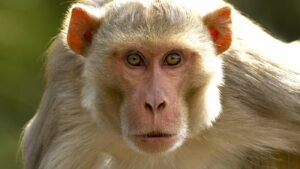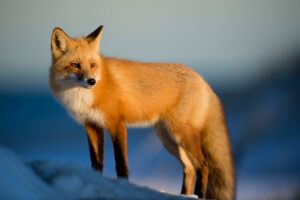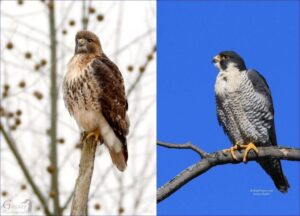10 Wild Animals That Have Adapted to Urban Life : As urban areas expand and natural habitats diminish, various wild animals have remarkably adapted to life in cities. These adaptations include altering their behaviors to find food, shelter, and safety in human-dominated environments.This phenomenon underscores not only wildlife’s incredible resilience but also the importance of integrating responsible planning in urban development.
1. Leopards
In Indian cities like Mumbai and Pune, leopards have adapted to living on the edges of urban sprawl, particularly near protected forest areas such as Sanjay Gandhi National Park. These elusive big cats use railway lines, overgrown drains, and abandoned lots to move stealthily through human-dominated areas, especially at night. While they do not live in city centers, they frequently enter urban fringes to prey on stray dogs, pigs, and livestock. Their presence highlights an evolving coexistence at the urban-wildlife interface, where proper waste management and awareness are key to minimizing conflict.
2. Raccoons
Native to North America, raccoons are now common in suburbs and cities like Toronto, Chicago, and New York. Known for their intelligence and dexterous front paws, they easily open trash bins and enter attics or chimneys for shelter. Their adaptability and opportunistic behaviour make them one of the most successful urban wildlife species.

3. Monkeys
In cities like Delhi, Jaipur, and Bangkok, monkeys such as rhesus macaques and langurs have become urban dwellers. They often steal food from markets, vehicles, or homes and are known to become aggressive when fed regularly by humans. Temples and old buildings serve as their new “forests,” offering height and shelter.

4. Coyotes
Once limited to plains and deserts, coyotes are now commonly seen in major U.S. cities such as Los Angeles and Chicago. These canines have adapted well by hunting rodents, scavenging waste, and even crossing roads at low-traffic hours. Their presence is often unnoticed until conflicts with pets or livestock occur.

5. Foxes
Urban foxes, particularly the red fox, are widespread in cities like London, Tokyo, and Melbourne. They use railway lines, parks, and backyards to roam and rest during the day. At night, they forage for food in garbage bins or prey on small animals like rats and birds.

6. Wild Boars
In European cities such as Berlin and Barcelona, wild boars have become a common sight. They forage in parks and gardens, often digging up lawns in search of food. Their presence in urban areas has led to increased human-wildlife interactions, sometimes resulting in conflicts.

7. Bears
Bears, particularly black bears, have been spotted in North American cities like Asheville and Boulder. Attracted by garbage and bird feeders, they often wander into neighborhoods, leading to concerns about safety and the need for bear-proof waste management.
8. Deer
Deer have adapted to urban environments by utilizing green spaces such as parks and golf courses. In cities like Portland and Ottawa, they are often seen grazing in residential areas, leading to challenges in managing deer populations and preventing vehicle collisions.

9. Hawks and Falcons
Birds of prey like hawks and falcons have found urban areas to be suitable hunting grounds. Skyscrapers mimic cliff faces, providing nesting sites, while pigeons and rodents serve as abundant food sources. Cities like New York and Chicago have seen successful nesting of peregrine falcons on tall buildings.

10. Snakes
Certain snake species have adapted to urban settings by inhabiting gardens, parks, and even homes. They help control rodent populations but can cause alarm when encountered by residents. Education and awareness are key to mitigating fear and promoting coexistence.
Final Thoughts
The adaptation of these wild animals to urban environments highlights the resilience of nature and the need for thoughtful urban planning. By understanding and respecting the presence of wildlife in our cities, we can foster coexistence and ensure the well-being of both humans and animals.
FAQs
Q1: Why are wild animals moving into urban areas?
A1: Habitat loss due to urban expansion forces animals to seek food and shelter in cities.
Q2: Are urban-dwelling wild animals dangerous?
A2: While some can pose risks, many adapt peacefully. Awareness and proper waste management can reduce conflicts.
Q3: How can cities promote coexistence with wildlife?
A3: Implementing green spaces, wildlife corridors, and public education programs can help integrate wildlife into urban planning
Fun Fact: A study by the Wildlife Institute of India revealed that some urban leopards have adjusted their activity patterns to avoid human encounters.

